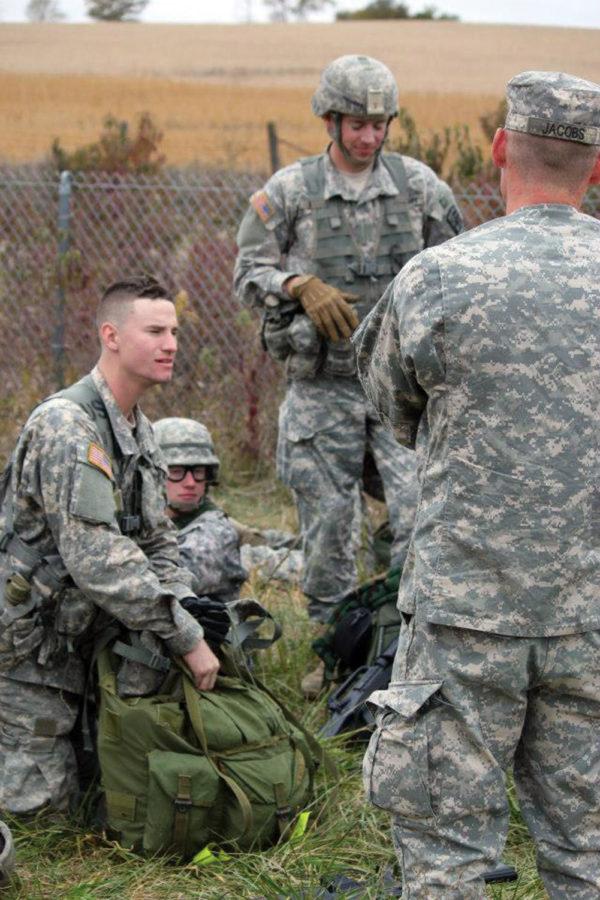ISU Army ROTC to take part in Bataan Memorial Death March
Photo courtesy of Brandon Amerien
ROTC Competition
March 14, 2013
The ISU Army ROTC will have nine cadets travel down to White Sands Missile Range, New Mexico for the annual Bataan Memorial Death March this weekend.
The nine Iowa State cadets will be waking up bright and early Friday morning to travel down to New Mexico to partake in the 26.2 mile Bataan Memorial Death March on Sunday.
“It’s a memorial march to remember the sacrifices that the actual soldiers had to endure during the Bataan Death March in World War II,” said cadet Zachary Graham, senior in anthropology.
According to the Memorial March website, several thousand people every year participate in the annual Bataan Memorial Death March through the harsh desert terrain in New Mexico to honor the soldiers who defended the Philippine Islands during World War II.
“So it’s 26.2 miles and it’s meant to replicate a little bit of pain and suffering that they had to endure,” Graham said.
The Bataan Death March took place on April 9, 1942, after tens of thousands of American and Filipino soldiers were surrendered to the Japanese military. They marched for days in the blistering heat of the Philippine jungles and thousands of them died in the march, and the survivors faced the hardships in the Japanese prisoner of war camps.
The march in New Mexico is meant to honor those that had to suffer through that perilous march over 70 years ago in the Philippines.
The Bataan Memorial Death March was started in 1989 by the Army ROTC department at New Mexico State University and has been held annually ever since, with the exception of 2003.
There are two routes you can participate in for the march. The green route is 26.2 miles and the blue route is 14.2 miles. The top two finishers in each category receive awards for the green route, while there are no awards given for the blue route.
A variety of people participate in the march, which goes through the White Sands Missile Range in New Mexico every year. It’s considered to be a marathon of sorts and also a way to honor fallen heroes.
“There are a lot of wounded warriors that go and amputees that actually do it too, so it’s kind of both. It’s a marathon but it’s also a way to remember fallen soldiers,” said cadet Ben Quimby, senior in mechanical engineering.
Remembering past soldiers and what they have gone through can also be used as a learning tool for cadets.
“Every cadet here, you know we’re trained to become officers in the United States Army and remembering the legacy of the soldiers who’ve gone before us is a very important part of our education,” Graham said.







